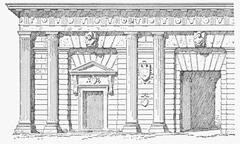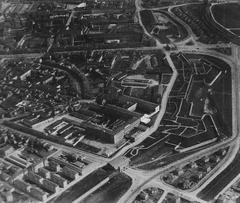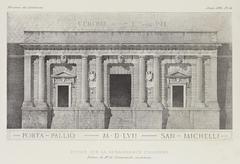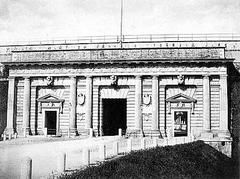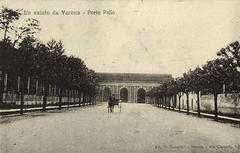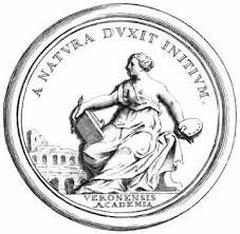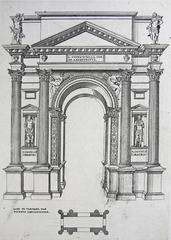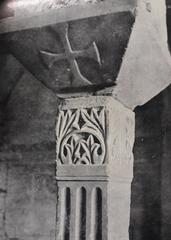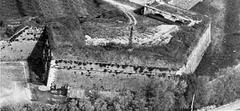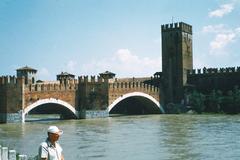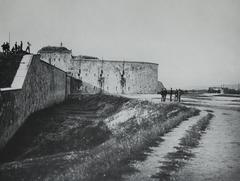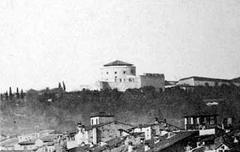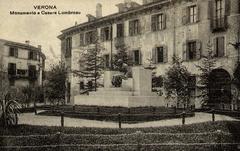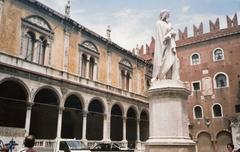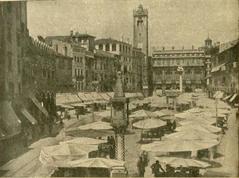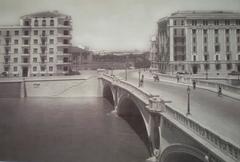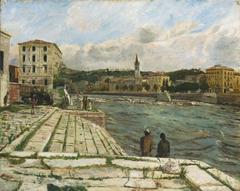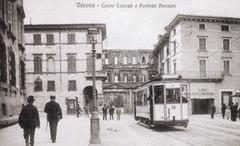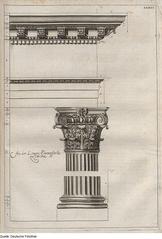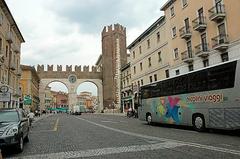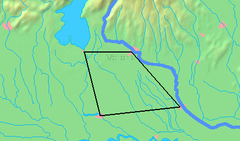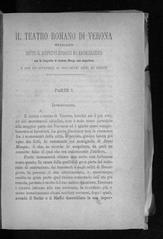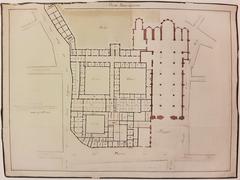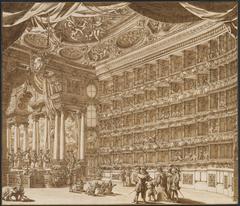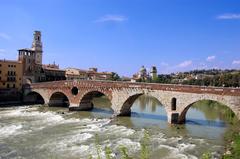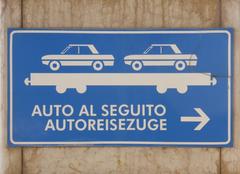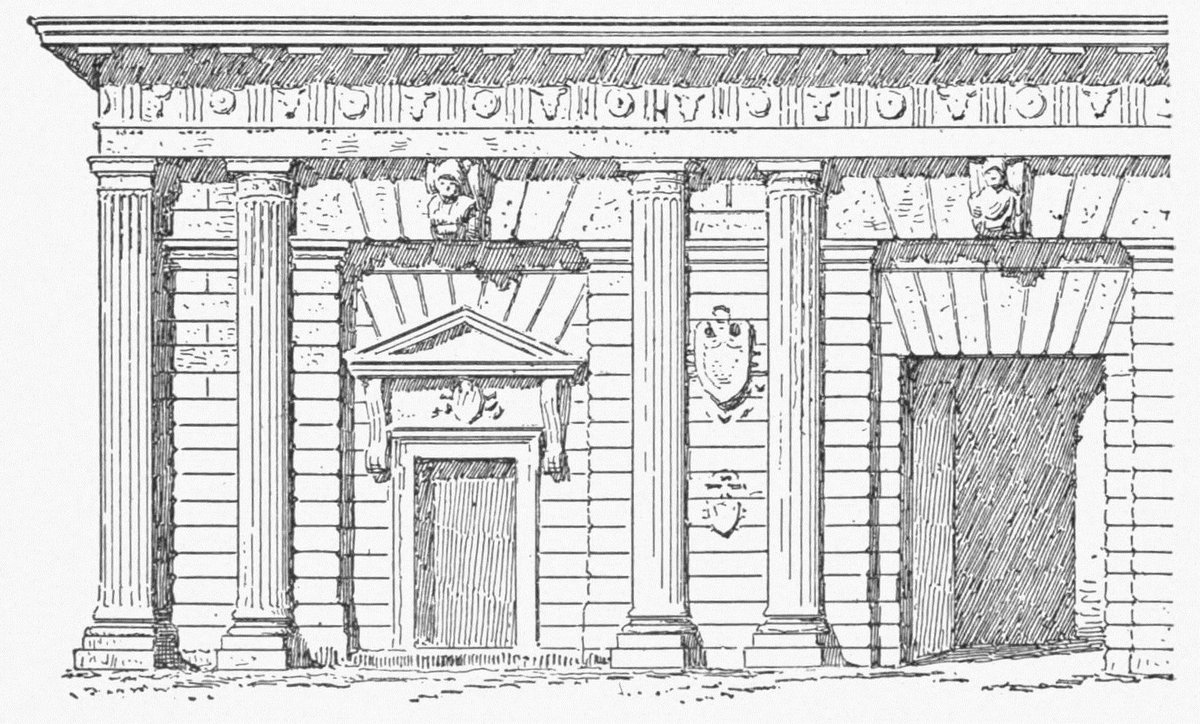
Comprehensive Guide to Visiting Porta Palio, Verona, Italy
Date: 24/07/2024
Introduction
Porta Palio is a remarkable historical monument located in Verona, Italy. Designed by the renowned Renaissance architect Michele Sanmicheli, this gate is a splendid example of Renaissance military architecture. Constructed between 1550 and 1561, Porta Palio was built on the site of an older medieval gate known as ‘Porta del Palio,’ named after the ‘palio del drappo verde,’ a traditional speed race event (Visit Verona). The gate’s design harmoniously blends defensive functionality with classical aesthetic elements, making it a significant landmark that showcases the grandeur of Roman architectural influence (Brilliant Tourism). Porta Palio served as a crucial part of Verona’s outer medieval walls, constructed under the Venetian Republic’s rule during the 16th century, playing a pivotal role in the city’s defenses (Wikipedia). Today, it stands as a testament to Verona’s rich historical and architectural heritage, attracting tourists from around the world who come to admire its unique design and historical significance (Comune di Verona). This comprehensive guide will delve into Porta Palio’s history, architectural details, visitor information, travel tips, and its cultural and historical impact, providing you with all the essential information for a memorable visit.
Table of Contents
- [Introduction](#introductionintroduction)
- [Historical Background](#historical-backgroundhistorical-background)
- [Origins and Construction](#origins-and-constructionorigins-and-construction)
- [Architectural Significance](#architectural-significancearchitectural-significance)
- [Historical Context](#historical-contexthistorical-context)
- [Architectural Details](#architectural-detailsarchitectural-details)
- [Visitor Information](#visitor-informationvisitor-information)
- [Ticket Prices](#ticket-pricesticket-prices)
- [Opening Hours](#opening-hoursopening-hours)
- [Accessibility](#accessibilityaccessibility)
- [Travel Tips](#travel-tipstravel-tips)
- [Best Times to Visit](#best-times-to-visitbest-times-to-visit)
- [Nearby Attractions](#nearby-attractionsnearby-attractions)
- [Guided Tours](#guided-toursguided-tours)
- [Photographic Spots](#photographic-spotsphotographic-spots)
- [Cultural and Historical Impact](#cultural-and-historical-impactcultural-and-historical-impact)
- [Modern-Day Relevance](#modern-day-relevancemodern-day-relevance)
- [FAQ](#faqfaq)
- [Conclusion](#conclusionconclusion)
Historical Background
Origins and Construction
Porta Palio was constructed between 1550 and 1561, designed by the renowned architect Michele Sanmicheli, who also designed other notable gates in Verona, such as Porta Nuova and Porta San Zeno. Unfortunately, Sanmicheli passed away in 1559, two years before the completion of Porta Palio (Comune di Verona). The gate was built on the site of a medieval portal known as “Porta del Palio,” named after the “palio del drappo verde,” a traditional event featuring speed races. The winning runner was awarded a 12-meter green banner, or “palio” (Visit Verona).
Architectural Significance
Porta Palio is a prime example of Renaissance military architecture. Sanmicheli’s design aimed to combine the necessities of war with the elegance of Renaissance architecture. The gate’s robust Doric columns convey a sense of strength, while its classical elements suggest Roman grandeur (Brilliant Tourism). The gate’s facades are distinct from each other - the city-facing facade is unadorned, while the outward-facing facade is more elaborate, intended to welcome visitors coming from outside the city along the Roman Via Postumia (Visit Verona).
Historical Context
Porta Palio was part of Verona’s outer medieval walls and served as a defensive structure. The gate was built on behalf of the Venetian Republic, which controlled Verona during the 16th century. The name “Porta Palio” is derived from the city lists, or squares for equestrian competitions, on the site of which the gate was built (Wikipedia). Before Porta Palio, the site housed the Porta San Massimo gate, constructed in the Middle Ages under the orders of Cangrande della Scala (Brilliant Tourism).
Architectural Details
Porta Palio’s architectural design features different facades. The city-facing facade consists of one arch and is lined with rustic wood, while the road-facing facade features five arches forming a covered gallery. The gate stands between the Bastion of St. Bernardino and the Bastion of the Holy Spirit. The rectangular base includes a large arched opening leading to a covered gallery and two smaller side arches. The upper floor once housed rooms for the guard (Brilliant Tourism). The external facade is adorned with Doric semi-columns made of polished local tuff and rusticated stone. The inner facade forms a covered gallery of a large order, consisting of six arches supported by monumental pillars. The gate was also equipped with wooden suspension bridges that descended onto a stone bridge crossing the moat (Brilliant Tourism).
Visitor Information
Ticket Prices
Visiting Porta Palio is free of charge; there are no entrance fees required to admire this historical gate from the outside. However, visitors should check for any special events or guided tours that might have associated costs.
Opening Hours
Porta Palio is an open-air monument, accessible to visitors at any time of the day. While the gate itself is not open for internal visits, its exterior can be viewed and appreciated at any time.
Accessibility
The area around Porta Palio is generally accessible, but visitors with mobility issues should be aware that the ground may be uneven in some parts. It is advisable to wear comfortable footwear when visiting.
Travel Tips
Best Times to Visit
The best time to visit Porta Palio is during the spring and autumn months when the weather is pleasant. Early mornings or late afternoons provide optimal lighting for photography and a quieter experience.
Nearby Attractions
Porta Palio is located along the Roman Via Postumia, connecting it to other notable historical attractions in Verona, such as the Arco dei Gavi (Gavi Arch), Porta Borsari, and Piazza delle Erbe. These sites offer a deeper exploration into Verona’s rich history (Visit Verona).
Guided Tours
Guided tours are available for those interested in a more in-depth understanding of Porta Palio and its historical context. Local tour operators offer packages that include multiple historical sites around Verona.
Photographic Spots
For photography enthusiasts, the outward-facing facade of Porta Palio provides a picturesque backdrop with its elaborate design. The gate’s position near the Bastion of St. Bernardino and the Bastion of the Holy Spirit also offers unique angles for capturing its grandeur.
Cultural and Historical Impact
Until the end of the 18th century, Porta Palio was considered a masterpiece of military architecture and was frequently mentioned in thematic treatises as an excellent example of a city gate. Giorgio Vasari, a prominent Italian painter and architect, described the gate as “new, extravagant, and beautiful” (Brilliant Tourism). Sanmicheli designed the gate to highlight the entrance to Verona from the Postumian road, one of Italy’s main transport routes since ancient Roman times.
Modern-Day Relevance
Today, Porta Palio stands as a testament to Verona’s rich historical and architectural heritage. While the gate is not open for internal visits, it remains a significant landmark for tourists exploring the city’s historical sites. The gate’s location along the Roman Via Postumia connects it to other notable historical attractions in Verona (Visit Verona). Porta Palio’s historical and architectural significance continues to attract visitors interested in Renaissance architecture and Verona’s medieval history. The gate’s unique design and historical context provide a fascinating glimpse into the city’s past, making it an essential stop for anyone exploring Verona (Comune di Verona).
FAQ
What are the visiting hours for Porta Palio? Porta Palio is accessible at any time of the day as it is an open-air monument.
Is there an entrance fee for Porta Palio? No, visiting Porta Palio is free of charge.
Are there any guided tours available? Yes, local tour operators offer guided tours that include Porta Palio and other historical sites in Verona.
What is the best time to visit Porta Palio? The best times to visit are during spring and autumn, particularly in the early morning or late afternoon for better lighting and a quieter experience.
Conclusion
Porta Palio is a remarkable monument that offers a deep dive into Verona’s Renaissance architecture and medieval history. Whether you’re a history buff, architecture enthusiast, or casual traveler, Porta Palio is a must-see landmark in Verona. For more travel tips and updates, follow us on social media or download the Audiala mobile app.
